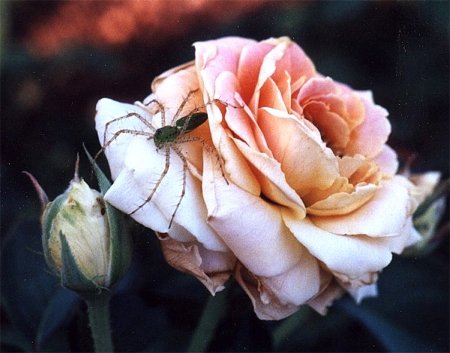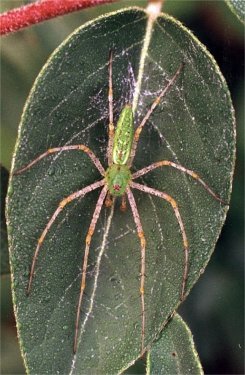Green Lynx
by Valerie (September 3, 2000)
 
Although the green coloration helps camouflage the spider when it's in foliage, it makes a striking contrast to the flowers it often settles on for hunting, creating stunning photographic opportunities. The male green lynx is fairly large for a male spider and is pictured on a dew-covered leaf. The obvious way to distinguish the male is by his enlarged palpal organs. These are on the short appendages (palps) located on his head on either side of the jaws. In spiders, the palpal organs are uniquely shaped for each species and are used for the transfer of sperm to the female. The shape is very important since it must fit into the female's receptors. Before males go seeking a mate, they charge their palpal organs with sperm by using a special sperm web they produce, which pulls a drop of semen from their rear to the palps in front. It is not certain why they don't just reach around for it, which most species would be capable of doing, but they have instead evolved this more elaborate procedure.
Young female green lynx spiders are shaped pretty much like the males, with a slender abdomen. The arachnid pictured below in the morning glory has slender palps, showing her to be female. As they mature and then produce eggs, their abdomen becomes much larger, and they become more territorial. Adult females are always easy to find once they are discovered since they will soon lay eggs and will stand guard over the egg sac and hatchlings for as long as their strength holds out. They don't seem to eat during this time, and it is often late in the fall, with freezes imminent, so their emaciated bodies don't hold out very long, for one reason or another.
 |